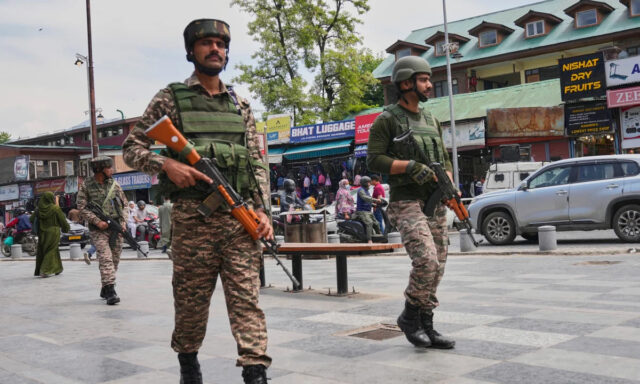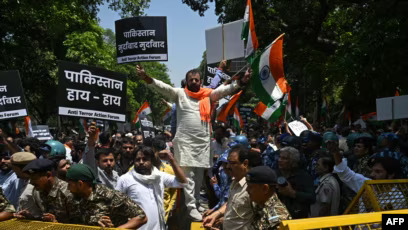
Tensions between India and Pakistan have flared dramatically following a deadly attack in Kashmir on April 22 that left 26 people dead—most of them tourists visiting the region. The incident, which authorities suspect was carried out by Pakistan-based militant groups, has triggered a cascade of retaliatory measures from both nations, renewing fears of a broader regional conflict.
The Attack and Immediate Fallout
The attack occurred in the town of Gulmarg, a popular tourist destination in Indian-administered Kashmir. Eyewitnesses reported a sudden ambush on a tourist bus by heavily armed gunmen, followed by a prolonged firefight with Indian security forces. The Indian government quickly condemned the incident, pointing fingers at Pakistan for harboring and supporting militant networks active in the region.

Prime Minister Narendra Modi issued a strong statement warning that “cross-border terrorism will no longer be tolerated.” Within hours, India moved to revoke all existing visas issued to Pakistani nationals and began expelling several Pakistani diplomatic staff. In an unprecedented step, New Delhi also announced the suspension of the Indus Waters Treaty, a crucial water-sharing agreement brokered in 1960.
Pakistan’s Retaliation
Islamabad swiftly condemned the accusations as “baseless and politically motivated.” The Pakistani government, led by Prime Minister Shehbaz Sharif, responded by closing its airspace to Indian commercial airlines and immediately halting bilateral trade. Pakistan also recalled its ambassador from New Delhi for consultations and warned that any attempt to divert water from the Indus River system would be regarded as an “act of war.”
“The Indus Waters Treaty is a cornerstone of regional peace,” Sharif said in an emergency press conference. “Any attempt by India to unilaterally violate this agreement would have grave consequences.”
The Kashmir Dispute: A Long-Standing Flashpoint
Kashmir remains one of the most volatile and heavily militarized regions in the world. Claimed in full by both India and Pakistan but administered in parts by each, the Himalayan territory has been a source of conflict since the partition of British India in 1947. The region has witnessed multiple wars, frequent skirmishes, and ongoing insurgency.
India accuses Pakistan of actively supporting separatist militants and destabilizing the region through covert operations. Pakistan, meanwhile, maintains that it only offers moral and diplomatic support to Kashmiris seeking self-determination.
Diplomatic Relations at a Breaking Point
With both countries now reducing their diplomatic footprints and engaging in increasingly hostile rhetoric, concerns are growing within the international community. The United Nations, the United States, and several European countries have called for restraint, urging both nations to return to dialogue and avoid escalation.
However, public sentiment in both countries has hardened, especially in India, where images of the aftermath of the Kashmir attack have gone viral on social media. Nationalist voices are calling for a “decisive response,” while opposition leaders demand clarity on the government’s next steps.
Fear of Military Conflict
Defense analysts are warning that the current crisis could spiral into a military confrontation if cooler heads do not prevail. Indian military units along the Line of Control (LoC) have been placed on high alert, and Pakistan has reportedly mobilized air defense systems in response.
The revocation of the Indus Waters Treaty in particular is seen as a major escalation. Water security is a critical issue in Pakistan, where agriculture and daily life are heavily dependent on the Indus River system. Experts warn that any attempt to cut off or reduce water flow could provoke an armed response from Islamabad.
What’s Next?
With regional peace hanging in the balance, backchannel negotiations are reportedly underway, facilitated by neutral countries such as the UAE and Oman. However, the entrenched positions on both sides make a diplomatic breakthrough uncertain.
As tensions rise and the possibility of miscalculation looms, the coming days will be crucial in determining whether South Asia steps back from the brink—or moves toward a new and dangerous chapter in its history.



